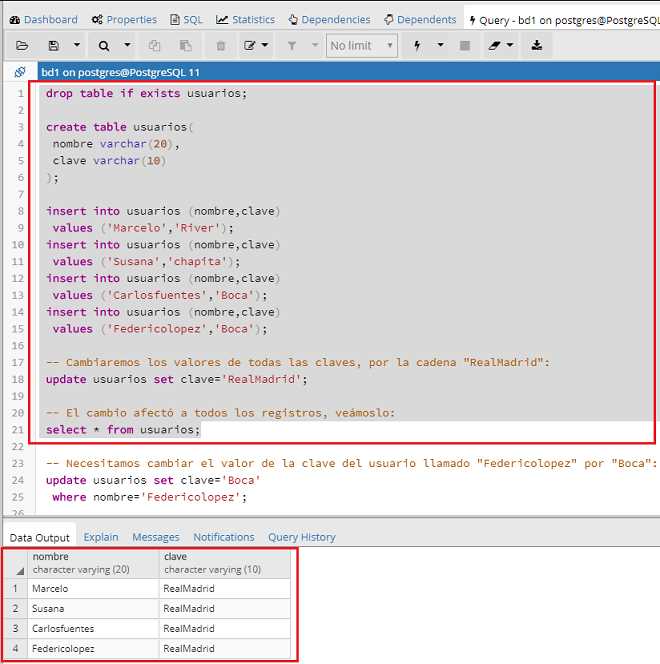
UPDATE t AS t SET id = c.id, ext_id = c.ext_id FROM (VALUES (1,3),(2,3),(3,3),(4,3)) AS c(id,ext_id) WHERE c.id = t.idįunction updateMultiple(table, recordRows)) WHERE c.id = t. After telling your database what table you want to work with, the next step is to tell it which columns we are going to be updating with the SET command. Var result = updateMultiple('t', payload) The subquery format follows the general form: UPDATE tablename SET column1 column1, column2 column2., columnN columnN WHERE condition In this.

Alter cluster custom resource (cr.yaml) manifest ers section. I will use the regular kubectl approach: 1 kubectl apply -server-side -f deploy/bundle.yaml Django application would require its own user and database. Best way to manage PostgreSQL database access permissions at scale is using the concept of. Limiting access inside the database with roles. Published list of PostgreSQL clients and their support for SCRAM is available here.

in code using **IDs** as first bind variable and **statuses** as the second bind variable:įrom (select unnest(:1::int) as id,unnest(:2::text) as status) as new Set up PostgreSQL Use your favorite way to deploy PostgreSQL Operator. The PostgreSQL client has to support scram-sha-256 authentication, so authentication with older client software will fail. THE update of multiple rows with/by different valuesįrom (select unnest(array::int) as id,unnest(array::text) as status) as new Select unnest(array::int) as id, unnest(array::text) as status

#Set update postgresql how to#
Let's say you have an array of IDs and equivalent array of statuses - here is an example how to do this with a static SQL (a sql query that doesn't change due to different values) of the arrays : drop table if exists results_dummy Ĭreate table results_dummy (id int, status text, created_at timestamp default now(), updated_at timestamp default now())


 0 kommentar(er)
0 kommentar(er)
